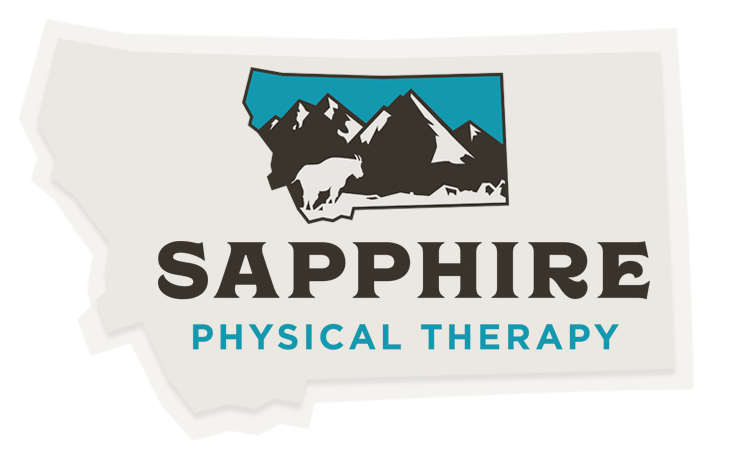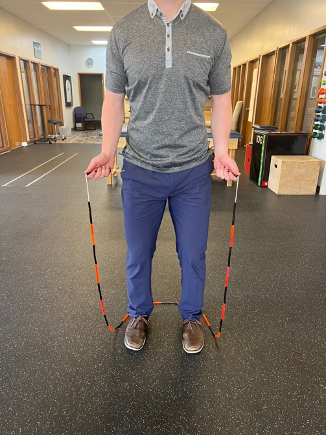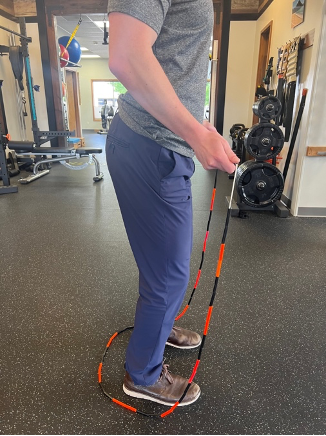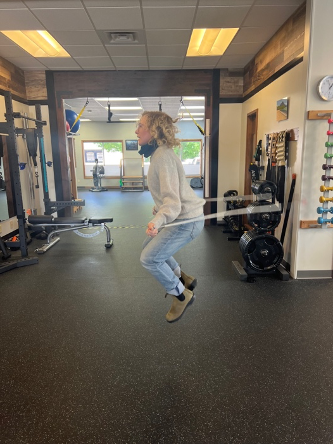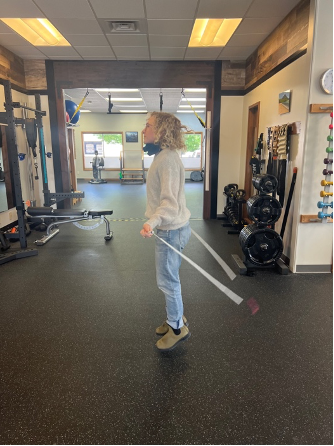How jumping rope can improve your 3km time...and more!
As we have discussed in blog posts from the past, the importance of supplementing running with resistance and plyometric training is well documented in the research. These activities can be helpful for returning from an injury, reducing risk of future injury, improving muscle strength and bone health, and much more (1,2,3). While these are all important reasons to consider strength and plyometric training, there are also performance-based reasons to start introducing these activities into your programming. Some of the latest research on jumping rope, a plyometric activity, shows participating in a jump rope program can improve running and plyometric performance (4).
A study performed by Gracia-Pinillos et al. examined the impact of replacing a traditional warm-up with jumping rope prior to running on 3km trial times, jump performance, arch stiffness, and reactive strength index in amateur runners. This study had 96 participants split into two groups, a jump rope warm-up group or a control ‘usual’ warm-up group, over a 10-week period. The results of the study showed that those participants who were in the jump roping group had significant improvements in all the measures listed above. So, how much jumping rope does it take to achieve these types of results?
Over the 10-week program, the participants in the jump rope group never performed more than 20 minutes a week of jumping rope! Here is a table from the study that shows the breakdown of the program:
As you can see, they slowly increased the number of sessions, cadence, work:rest ratio, and whether it was a single or double leg hop. What is remarkable about this change in warm-up is its simplicity. It doesn’t require lots of time, equipment or space to perform and it can effectively prepare one for exercise by increasing heart rate and blood flow. Whether you are interested in boosting your performance or looking for some variation in your warm-up prior to running, jumping rope could provide a welcomed alternative.
Looking to get started jumping rope?
If you are interested in starting a program like this, here is a quick guide to help you get started:
First, make sure you feel comfortable performing mini hops in place without a rope. Stand with your feet just under your shoulders with a slight bend in your knees (think athletic stance). Then, hop up and down in place, being sure the motion is coming from bouncing at your ankles and feet not your knees and hips. If you can tolerate 30 seconds without aches or pains, then it is time to introduce the rope.
If your knees and hips are flexing too much (image on the left), then you aren’t maximizing the properties of the foot and ankle complex that makes jumping rope effective. The image on right is the ideal hopping posture when you are in mid air.
Disclaimer: You don’t need a rope to do this. Hopping in place without a rope can be just as effective, but it isn’t as much fun or challenging.
Next, use a metronome, which can be downloaded as an app or googled, and set the cadence to 100 beats per minute. See if you can hop to the beat for 30 seconds. Don’t be discouraged if you catch your toes a couple of times and have to reset. It is going to take practice to get it down. Once you have mastered 30 seconds at 100 beats per minute you are ready to implement a program like the one performed in the study above!
At Sapphire Physical Therapy, we are lucky to have a resident expert in jumping rope, Erin Williams (pictured above!), who has provided some tips and tricks for success.
Determining rope length: The handles of the jump rope should be 4 finger widths below the armpit.
Hand placement: (With elbows slightly bent) Hands should be at your sides slightly in front of the torso, at the height of your front pockets.
Performance: Rotation of the rope should come from your wrist. Your shoulders and elbows should be relaxed. Slight bend in the knees and upright torso, keeping your eyes ahead.
Jump rope recommendation: Boxer Jump Rope 3.0 - Cardio Training Skip Rope | Elite SRS
For more information about your ability to participate in a plyometric routine, schedule an appointment with Sapphire Physical Therapy by calling 406-549-5283.
By Andrew Traver, PT, DPT
References:
(1)Hong, A Ram, and Sang Wan Kim. “Effects of Resistance Exercise on Bone Health.” Endocrinology and Metabolism, vol. 33, no. 4, 2018, p. 435, https://doi.org/10.3803/enm.2018.33.4.435.
(2) Beattie, Kris1; Carson, Brian P.1; Lyons, Mark1; Rossiter, Antonia2; Kenny, Ian C.1. The Effect of Strength Training on Performance Indicators in Distance Runners. Journal of Strength and Conditioning Research 31(1):p 9-23, January 2017. | DOI: 10.1519/JSC.0000000000001464
(3) Spurrs, R.W., Murphy, A.J. & Watsford, M.L. The effect of plyometric training on distance running performance. Eur J Appl Physiol 89, 1–7 (2003). https://doi.org/10.1007/s00421-002-0741-y
(4)García-Pinillos, Felipe, et al. “Jump-Rope Training: Improved 3-Km Time-Trial Performance in Endurance Runners via Enhanced Lower-Limb Reactivity and Foot-Arch Stiffness.” International Journal of Sports Physiology and Performance, vol. 15, no. 7, 2020, pp. 927–933, https://doi.org/10.1123/ijspp.2019-0529.
(5) Expert Opinion: Erin Williams, PT, DPT and former Montana Super Skipper.
